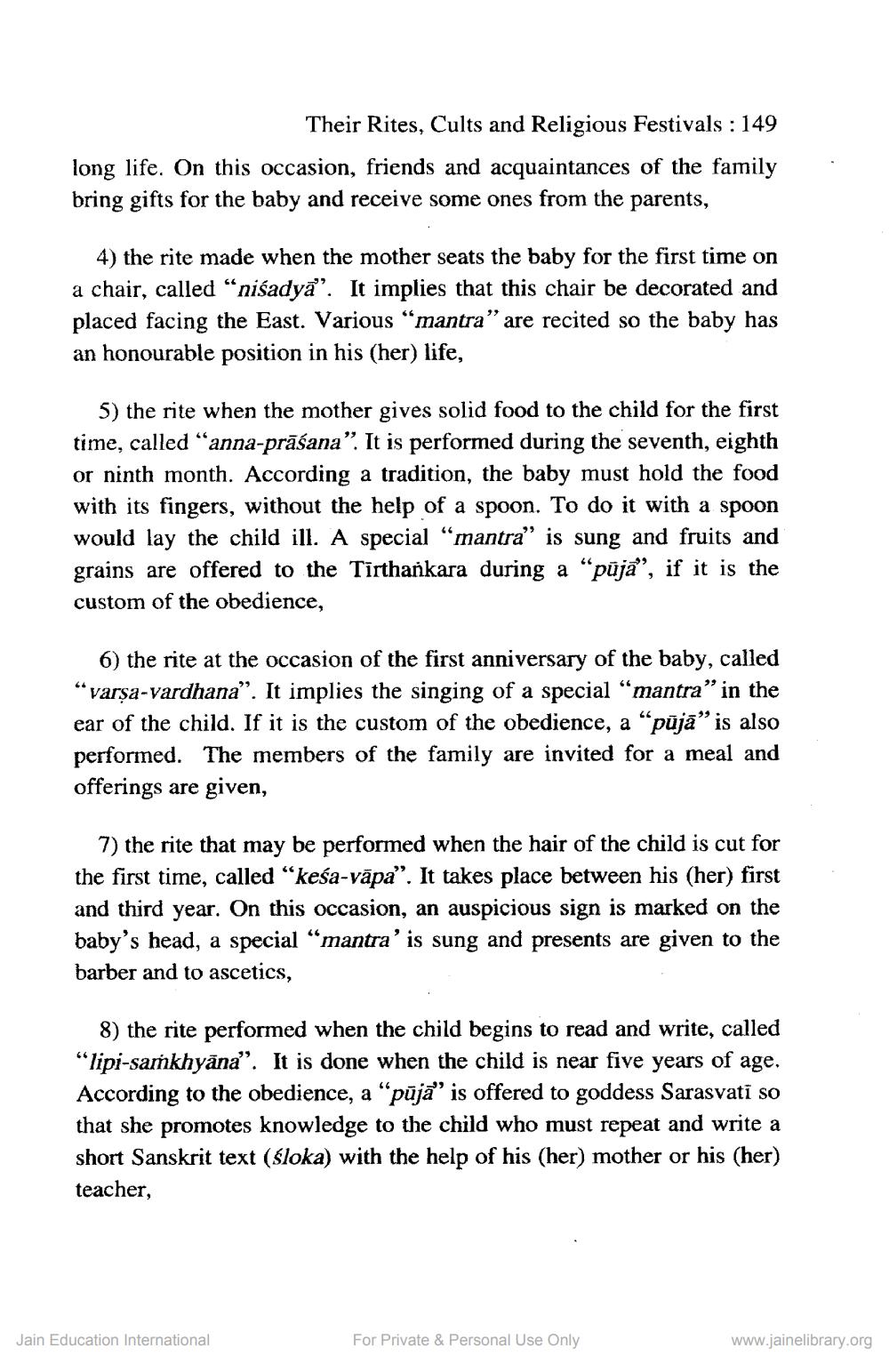________________
Their Rites, Cults and Religious Festivals : 149
long life. On this occasion, friends and acquaintances of the family bring gifts for the baby and receive some ones from the parents,
4) the rite made when the mother seats the baby for the first time on a chair, called “niśadyà”. It implies that this chair be decorated and placed facing the East. Various “mantra" are recited so the baby has an honourable position in his (her) life,
5) the rite when the mother gives solid food to the child for the first time, called “anna-prāśana”. It is performed during the seventh, eighth or ninth month. According a tradition, the baby must hold the food with its fingers, without the help of a spoon. To do it with a spoon would lay the child ill. A special “mantra" is sung and fruits and grains are offered to the Tirthankara during a “pūja”, if it is the custom of the obedience,
6) the rite at the occasion of the first anniversary of the baby, called "varșa-vardhana”. It implies the singing of a special “mantra" in the ear of the child. If it is the custom of the obedience, a “pūjā” is also performed. The members of the family are invited for a meal and offerings are given,
7) the rite that may be performed when the hair of the child is cut for the first time, called “keśa-vāpa”. It takes place between his (her) first and third year. On this occasion, an auspicious sign is marked on the baby's head, a special “mantra' is sung and presents are given to the barber and to ascetics,
8) the rite performed when the child begins to read and write, called “lipi-sarkhyāna”. It is done when the child is near five years of age. According to the obedience, a "pājā" is offered to goddess Sarasvati so that she promotes knowledge to the child who must repeat and write a short Sanskrit text (śloka) with the help of his (her) mother or his (her) teacher,
Jain Education International
For Private & Personal Use Only
www.jainelibrary.org




